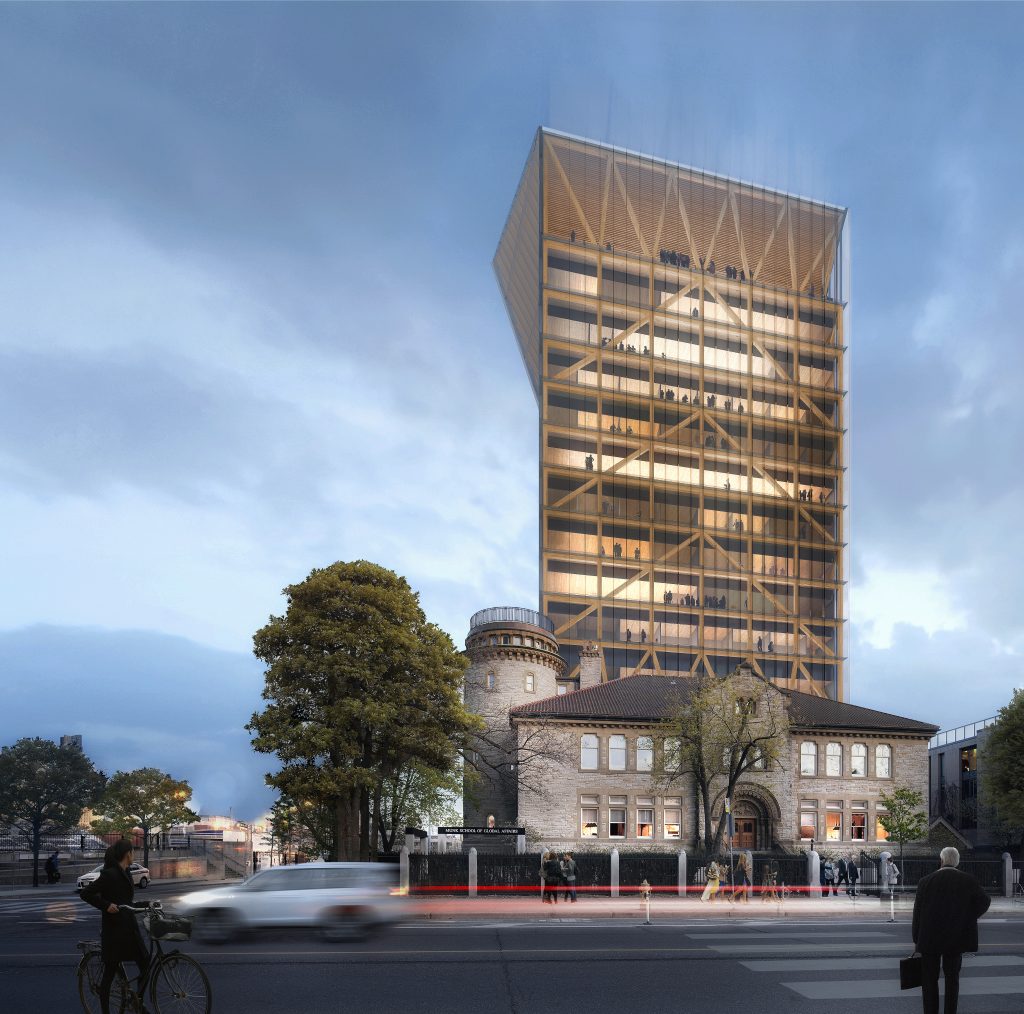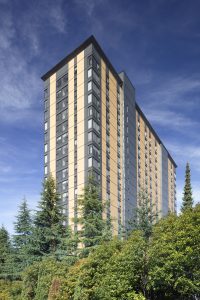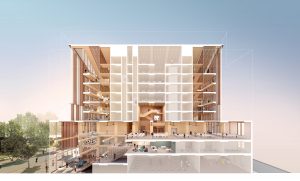
Tall wood buildings on the rise for Canadian universities
By Jillian Morgan
Construction Materials Green Construction
Patkau Architects, in partnership with MacLennan Jaunkalns Miller Architects (MJMA) and Blackwell Structural Engineers, will design U of T’s tower. (PHOTO: MJMA/Patkau Architects)
The University of Toronto has unveiled plans to construct a 14-storey wood building on its St. George campus, located in the city’s downtown.
Slated for construction at the end of 2019, the tower is expected to be the tallest mass timber-concrete hybrid building in North America, although U of T is just the latest school to opt for wood.
At George Brown College, development is underway on The Arbour, a $130 million 12-storey mass timber academic building, to be constructed on Toronto’s waterfront. On the West Coast, the University of British Columbia’s $51 million 18-storey residence tower, Brock Commons Tallwood House – currently the tallest mass timber building in the world – opened in July 2017.

Brock Commons has a concrete podium and two concrete cores, with 17 storeys of cross-laminated-timber floors supported on glue-laminated wood columns. The cladding for the facade is made with 70 per cent wood fibre. (PHOTO: Acton Ostry Architects/UBC/Michael Elkan)
The popularity of wood construction is due, in part, to its sustainability. Wood offers improved energy performance and emits fewer greenhouse gasses over its lifecycle.
Other benefits include cost-savings and ease of assembly. A crew of nine constructed Brock Commons four months ahead of schedule – 70 days after prefabricated components arrived on site. At U of T, many of the tower’s components will also be manufactured off-site.
The Arbour, which George Brown hopes will classify as net-positive, takes these benefits a step further through the incorporation of green technology, such as solar chimney systems used to power ventilation. It will also be equipped with smart building systems
Still in the design phase of development, U of T’s tower, to be built with cross-laminated timber, will sit above the Goldring Centre for High Performance Sport and house academic units. It will be financed in part by federal and provincial tall wood building incentives.
Ontario is providing up to $2.45 million to offset the costs associated with four mass timber projects in the province, including U of T’s tower and The Arbour.

At a cost of $130 million, The Arbour will be the first project of its kind in Ontario. Construction of is scheduled for 2021. (PHOTO: Moriyama & Teshima Architects/Acton Ostry Architects)
Under Natural Resources Canada, the Tall Wood Building Demonstration Initiative funded two tall wood construction projects, including Brock Commons, from 2013 to 2017. Starting in April 2018, $40 million in funding will be available for mass timber construction via the Green Construction through Wood program.
Research projects and the adoption of wood construction in the 2015 National Building Code (NBC) are among other efforts from federal and provincial governments to increase wood construction.
Building codes in British Columbia, Quebec, Ontario, Alberta and Nova Scotia have been amended to allow mid-rise wood frame construction.




